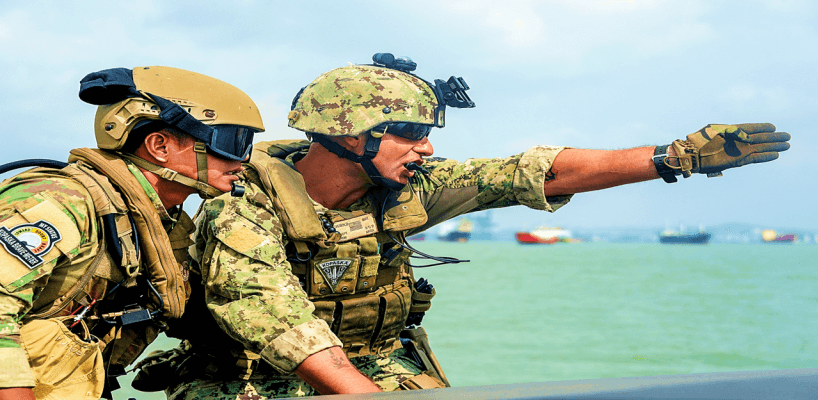The Department of Defense provides a transcript service that when used can cut down the time it takes to get a associate’s or bachelor’s degree. Joint Services Transcript saves time and money by providing a college or university with a list of credits awarded as a result of military service.
Sent directly to the school, it can then evaluate and award credits toward a degree based on the program major and the school’s policy for transferring in credits. Most likely not all credits will transfer, but the ones that do can save hours spent in class and save GI Bill entitlement.
Credits for Military Service
Much of a veteran’s military occupational training and service experiences convert to college credits. The American Council on Education (ACE) evaluates enlisted, warrant officer and officer job descriptions, schools and certain types of training translating them into credits earned in certain categories.
For example, ACE lists the job description for an E-7 25U40 Signal Support Systems Specialist as:
” The Signal Support Systems Specialist supervises, plans and executes the installation, operation and maintenance of signal support systems, to include local area networks, wide area networks and routers; satellite radio communications and electronic support systems; and network integration using radio, wire and battlefield automated systems (BAS); develops and implements unit level signal maintenance programs; directs unit signal training and provides technical advice and assistance to commanders; develops and executes information services policies and procedures for supported organizations; coordinates external signal support mission requirements; prepares and implements Signal operations orders and reports; and plans and requests Signal logistics support for unit level operations and maintenance.“
Next, they evaluate the MOS at each skill level and write up credit recommendations. For this E-7 40-level position, it recommends:
- In the lower-division baccalaureate/associate degree category
- 3 semester hours in communications
- 3 in supervision
- 3 in networking fundamentals
- 3 in switching and switching protocols
- 3 in routing and routing protocols
- 3 in wide area network (WAN) technologies
- 3 in server administration
- 3 in satellite communications.
- In the upper-division baccalaureate degree category:
- 3 semester hours in management
- 3 in project management
- 3 in applied leadership
As said, other types of training and courses also count for credits. For example Army Basic Training counts as 6 credits all in the lower division level, broken down as:
- 1 semester hour in personal physical fitness
- 1 in self-defense
- 2 in first aid/CPR
- 1 recreation
- 1 in marksmanship
And the Signal Support Specialists course counts for an additional 15 credits:
- In the lower- division /associate degree category:
- 3 credits in network essentials
- 3 credits in electronic systems troubleshooting and maintenance
- 3 credits in computer troubleshooting and repair
- 3 credits in tactical mission planning laboratory
- In the upper-division baccalaureate degree category, 3 credits in network administration
So from just going to basic training, the Signal Support Specialists course and working the MOS, 54 credits are earned. This doesn’t even include credits from Leadership Courses and other Military Occupational Skill courses that could be awarded.
To illustrate the value of these credits if all were transferred in, 18 three-credit classes could be avoided just for already having the credits thereby saving a semester and a half of GI Bill entitlement use that could be saved and applied towards an advanced degree.
Getting a Transcript
Veterans serving in the Army, Navy, Marines or Coast Guard can get a transcript of military service credits by sending a request to JST Transcripts. Veterans of the Air Force can request transcripts from the Community College of the Air Force (CCAF) at: http://www.au.af.mil/au/barnes/ccaf/CCAF%20Transcript%20Request.pdf.
As a caution, have credits for military service evaluated by the school before enrolling. Also, don’t be afraid to shop around and get a second evaluation at an alternate school for comparison purposes. Each school has its own credit transfer policy and some schools are more generous than others.



